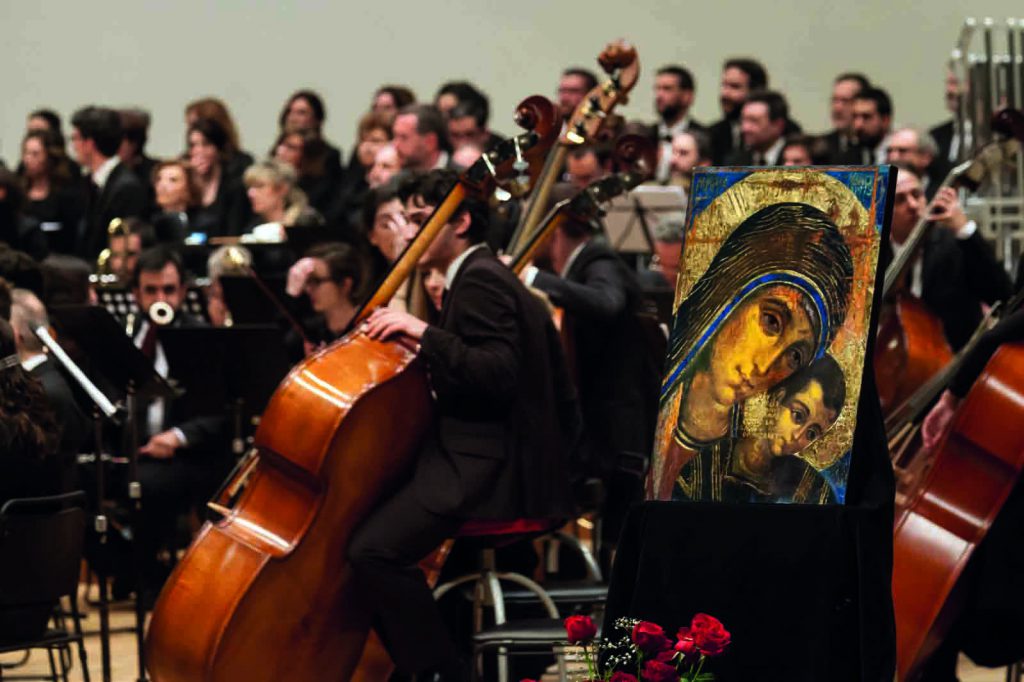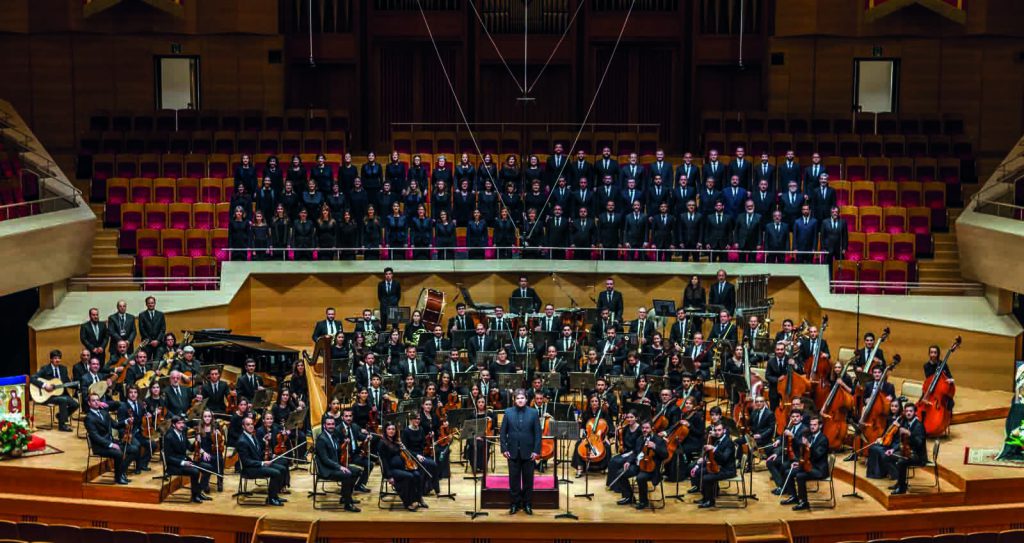Trieste, Italy – November 19, 2023 – 18:00 h. (GMT +1)
Symphonic poem dedicated to the martyrs.
A particularly important world premiere will take place on Sunday, November 19, at 6 p.m. at the Teatro Verdi in Trieste (Italy).
The first element to highlight is the work itself, “The Messiah”, which is composed of three moments: “Aquedá”, “Daughters of Jerusalem” and “The Messiah, lion to conquer”. A triptych with a symphonic vibe in which the piano plays a central role.
The titles refer to three episodes of the History of Salvation: the Sacrifice of Isaac by his father, Abraham. “Aquedah”, the Hebrew word meaning “Bind me”, is the word Isaac addresses to his father to make his sacrifice valid; and the cry of the angels, who proclaim: “Come and see faith on earth”. “Aquedá”, the Mystery of faith: a gift of God to man.
The second movement: “Daughters of Jerusalem” are the words of Christ to the women who accompany him on the way of the Cross, so that they do not weep for him, but for themselves and their children.
The third movement: “The Messiah, lion to conquer”, are the words of a Christian martyr of the fourth century, Victorino de Pettau, who reveals and poetically announces the Mystery of Christ, who, having come as a lion to conquer, becomes a lamb bearing the wickedness of man, to make him pass from death to life.
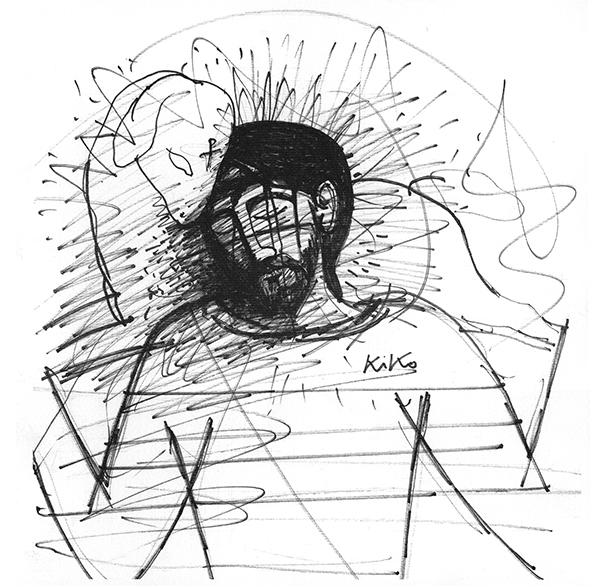
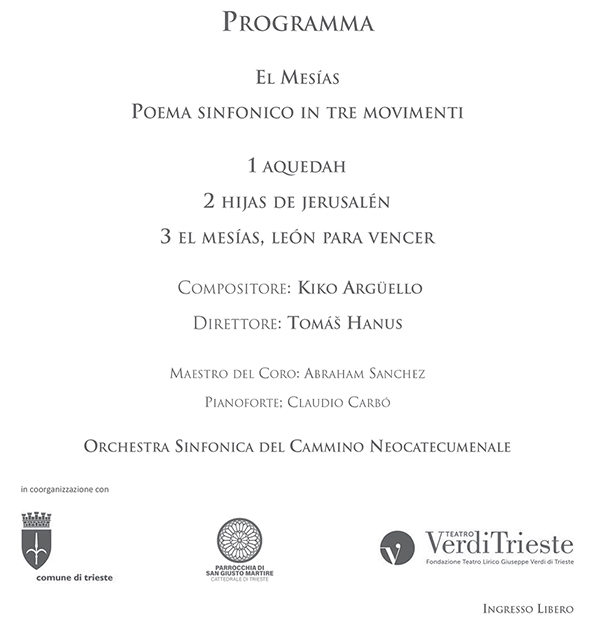
Present are Kerygmatic contents which announce to the Christian of today the way to live in one’s history: to accompany Christ on the Cross, to bear the sin of man, to become a lamb, to love others to the point of giving one’s life for them. Every Christian, united to Christ, is called to become a martyr, a witness to this love.
The second remarkable element of this world premiere is its author, Kiko Argüello, composer of another symphony: “The Suffering of the Innocents”, which had an international resonance and importance. It was performed on the stages of the main theaters and in several concert halls all over the world: Madrid, Metropolitan of New York – Lincoln Center, Chicago Symphony Hall, Berliner Philharmoniker Hall – Berlin, Gerard Behar Auditorium – Jerusalem, Suntory Hall – Tokyo, Hungarian State Opera – Budapest, Memorial Concert – Auschwitz, Piazza Unità d’Italia – Trieste, etc.
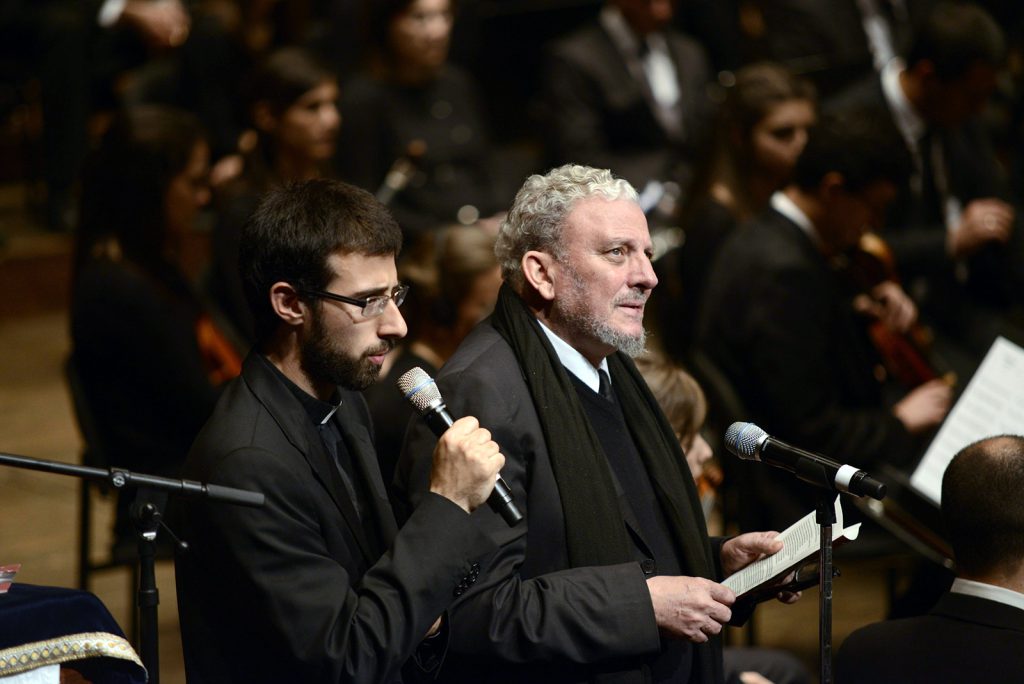
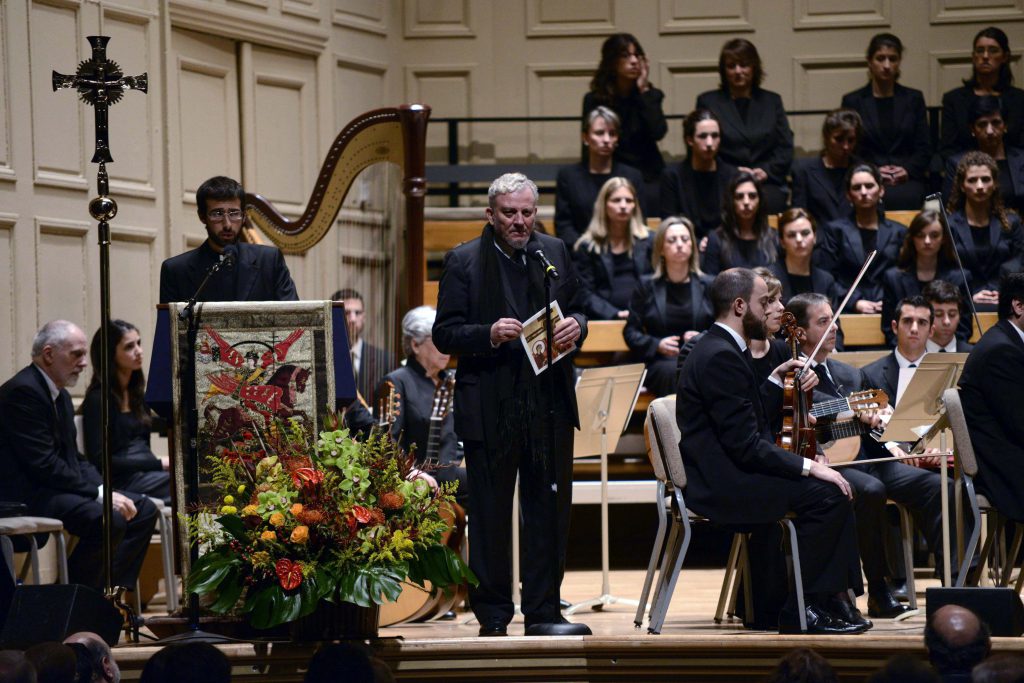
The author is a Spanish painter who was born in León on January 9, 1939. He studied Fine Arts at the San Fernando Academy in Madrid and in 1959 received the Extraordinary National Prize for Painting. In the early 1960s he experienced an existential crisis that provoked in him a profound conversion, which led him to dedicate his life to Christ and the Church.
In 1964 he decided to live among the poor in a shantytown on the outskirts of Madrid. In this marginalized situation, Kiko encountered the presence of Christ crucified.
Later he met a missionary, Carmen Hernandez, a graduate in Chemistry and Theology, today a Servant of God, with whom he gave life to a new form of preaching that soon after led to the birth of a Christian community. Thus, the first Neocatechumenal community was born among the poor, in which the love of Christ crucified became visible.
This seed began to germinate first in Spain, in some parishes of Madrid. After Kiko’s experience among the poor of the periphery of Rome, in the Latin Borghetto, it later spread to Italy; and from Spain and Italy, it expanded throughout the world. Today, in the five continents, in 135 countries, there are more than 20,000 Neocatechumenal Communities.
More than 50 years ago, in 1971, Kiko and Carmen sent a team of itinerant catechists to Trieste and in the Cathedral of San Giusto Martire, the first Neocatechumenal community was born.
Kiko Argüello and Carmen Hernández are the initiators of the Neocatechumenal Way, a diocesan Christian initiation, which, through catechesis, the Word of God and the Sacraments lived in community, people are lead to an adult faith and fraternal communion.
The Holy See approved the Statutes of the Neocatechumenal Way in 2008, which is recognized by several Popes as “a gift of the Holy Spirit for the Church of today”.
Kiko Argüello, besides being the initiator of this ecclesial reality, and composer of these two symphonies, is the author of important pictorial, architectural and sculptural works all over the world: Cathedral of Madrid, Parish of San Bartolomeo in Tuto in Scandicci (Florence), Church of the Redemptoris Mater Seminary in Rome, Parish of St. Catherine Labouré in Madrid, Redemptoris Mater Seminary in Macerata (Italy) and Warsaw (Poland), Neocatechumenal Center in Porto San Giorgio (Italy), International Center “Domus Galilaeae” on the Mount of Beatitudes in the Holy Land, etc. Through painting, conceived as a reflection of God’s light, and also through music, a universal language capable of opening the heart to the dimension of the spirit, Kiko finds a way to proclaim the Gospel to contemporary man. He puts his artistic vocation at the service of the Church and of the Liturgy, setting to music the Psalms, passages of Sacred Scripture, hymns of the early Church and also spiritual poems taken from his writings.
The third element to highlight of this concert in Trieste is the orchestra. Founded by Kiko in 2010 to perform the first work: “The Suffering of the Innocents”. Both the members of the Orchestra and the Choir, about 180 musicians from Italy, Spain and other nations, are artists who put their talent freely at the service of the New Evangelization. This is a mission as an expressive form of beauty through music to announce and bear witness to the Gospel throughout the world.
The conductor of the orchestra is Tomáš Hanus, born in Brno, Czech Republic. Since the 2016-2017 season he has held the position of music director of the Welsh National Opera (UK). He has conducted in the most prestigious international opera houses and concert halls such as the Bayerische Staatsoper, the Paris Opera, the Grand Théâtre de Genève, the Teatro Real de Madrid, the Berlin Philharmonic, and has stood on the podium of the Royal Philharmonic Orchestra, the London Symphony Orchestra and the BBC Symphony Orchestra. He made his debut on the podium of La Scala in Milan last June.
The world premiere of the work is undoubtedly a privilege for the Teatro Verdi and for the city of Trieste.
